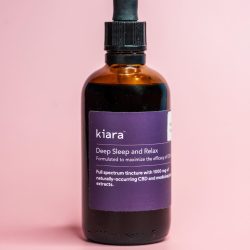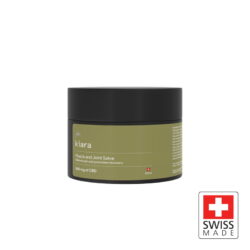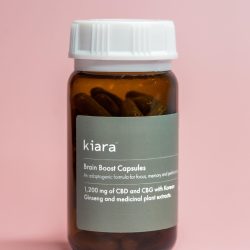A study conducted at Yale University suggests: Our sense of fear is a mutation of the endocannabinoid system.
What if an inherited mutation (relatively common) defines the way we process feelings of fear? this was the question set by a group of researchers at the university: if any genetic variant of an endocannabinoid receptor in some humans means that it is more “challenging” for their system to process feelings of fear, and therefore quickly develop feelings of anxiety, is it possible to balance this hereditary version with external additives?
the study in which the Yale people chose to focus is based on a growing pool of studies on the relationship between the mechanism of fear extinction, the endocannabinoid system in our bodies, the role of phytoconnabinoids produced in the cannabis plant, and their ability to balance these two systems.
(the study is intriguing because it is the first study in a long time to test the feasibility of a theoretical hypothesis and it does not come to “cure” or test “healing properties” for a particular disease.)
What is the mechanism of fear extinction?
A fear-eradication mechanism is an adaptation mechanism that humans have so that “we do not run around all day under the sun in constant fear.” fear is a natural and necessary sensation/reaction. people feel fear when exposed to a threat or a threatening situation. the threat can be physical, emotional or irrational, but whatever was causing it, fear serves us so that we can defend ourselves against the threat. in many cases, new experiences and experiences are threatening because they are not yet familiar to us.
If we have not encountered them before, how should we know what to expect, and should we be or be concerned about this threat? the more people we know, places, situations, or experiences, the more comfortable we become with them, and learn that they are not a threat. learning not to be afraid is the first and subtrial stage of the mechanism of eradication of fear and adaptation to the threat is another and necessary step in this mechanism.
Sometimes the fear-eradication mechanism malfunctions,
and trauma or post-traumatic stress disorder can interfere with a person’s ability to bypass daily “threats.”
For more than 2 decades, the cannabis plant has been under extensive research in the treatment of PTSD with the activation of the endocannabinoid system. From the information accumulated in the field, it turned out that the extinction of fear may be more difficult in cases of humans with a common hereditary mutation in CB1 receptors. (The hypothesis has so far been that the psychoactive molecule THC is effective in alleviading trauma in light of its “obscure” properties and the accompanying good mood)
How is the endocannabinoid system associated with regulating feelings of fear?
The endocannabinoid system is the biological mechanism responsible for balancing the various body systems. When the person encounters an external or internal stress factor that brings the body to an imbalance—it is the endocannabinoid system that works hard to restore it to balance. For example, it creates an inflammatory response to bruising or infections, it manages the feeling of pain in order to protect organs and wounds until they recover. It does this through chemical messengers in order to control and activate these reactions through the endocannabinoid system whose sultans are dispersed in many different organs in the body.
Among its many functions is the endocannabinoid system is also responsible for the mechanism of eradication of fear through control over memory management and learning. Today we know that the area of the brain responsible for feelings of fear, learning and creating memories contains many cannabinoid receptors.
Significantly increased concentration from CB1 receptors in other areas of the body.
Throughout our lives, this part of the brain helps us regulate and control fear by learning and forming memories. Every time we run into a spider, we slowly learn that there’s nothing to be afraid of. This process is especially necessary and essential during childhood and adolescence, a rapid period of emotional and mental development.
When the endocannabinoid system is balanced it helps the brain prevent fear and anxiety from becoming a permanent negative factor in its effect on us. This is how you learn, create memories, and develop a healthy and effective fear eradicacy mechanism. But what happens if the endocannabinoid system doesn’t do its job?
Results of the study: And now for the results of the study on the mechanism of fear-extinction, trauma and minimal genetic variants in the endocannabinoid system receptors conducted at Yale University and published in the issue of Biological Psychiatry in October 2019:The study states that an inherited mutation is probably preventing the children examined from developing a healthy fear-eradication mechanism compared to exposure to trauma in the past of the subjects – which did not affect the mechanism of fear extinction.
The study looked at 37 children, some of whom had previously been exposed to trauma. The researchers used virtual/augmented reality tools to learn about children’s fear extinction mechanism, learning processes, and learning memory mechanisms. In addition, the researchers evaluated the subjects for a specific hereditary mutation in CB1 receptors.
Some kids had the mutation and some didn’t.
During the two-day study, the researchers found a difference between two groups of children in relation to the extinction-learning mechanism and the mechanism of extinction, whether or not children experienced trauma in the past.
What does a fear-erading mechanism consist of?
“Extinction Learning”: The gradual decline in response to the situation or data stimuli presented without enforcement and power.
During the event shown, a new response is learned in order to replace the previous one. For example, a person may initially be afraid of spiders, but there will be a gradual decline in his negative response to the threat after learning that it is minimal.
“Extinction Memory”: the ability to remember the new reaction on top and instead of the previous old response without having to return each time to the reaction of the first encounter. this is how the person will feel again (but in the first place) comfortable next to spiders.
The study found that children who had an inherited mutation in CB1 receptors faced great difficulties in “shutting down” fears, learning positive responses and recalling the newly studied response.
The researchers found no measurable changes between children who had suffered past trauma and those who did not.
Everything “drained” into the hereditary mutation in CB1 receptors.
What do these findings mean for anxiety-related disorders?
if children and/or adults express high levels of anxiety, it is not a choice or choice. the results of the study assume that the cause may be an inherited mutation. the current assumption is that trauma plays a major and important role in the development of anxiety disorders, or simply because of the hypersensitivity of some people to threatening situations. instead of this assumption, the study suggests that people with anxiety disorders are afraid and anxious for hereditary reason.
If Yale University’s research is repeated on a much larger scale, we may need to redefine the way we think about anxiety disorders because if anxiety disorders are closely related to a common hereditary mutation of CB1 receptors, this means changing the entire therapeutic approach to the disorder. Phytokinbinoids, which mimic the action of the endocannabinoids we produce in our bodies,
may be the new therapeutic way forward.
Beyond proving the theory of hereditary mutation, researchers will be required to investigate
further.
For example – how cannabinoids affect normal CB1 receptors compared to those with the hereditary mutation. Some researchers in the field suggest that CBD could help people forget the trauma they have experienced, and the molecule may also help people suffering from endocannabinoid dysfunction that may be the basis for ongoing trauma.
Some describe that in the future one of the therapeutic alternatives will be “cannabinoid therapy” – all after further research. The idea is that if the endocannabinoid system of the person is not functioning then that person does not derive from himself the (endo) cannabinoids required to restore the body to balance. Or, the body does produce enough cannabinoids, but because of an abnormal mutation of the endocannabinoid system itself, the action of cannabinoids does not affect the body.
It may be possible in the future to bypass the status quo by adding the molecule that is missing from the brain – in the one that is in the plant.
It is important to remember that this is only an experimental study and it is probably far away today until a large-scale clinical study is conducted.
Many of the professional concepts mentioned in the article can be found in Linkchach
1. There is no doubt that one of the main reasons why people experience self-care in the CBD is anxiety, high mental stress and depression. It is hard to argue with a huge market that is growing in front of their eyes. At the same time, it is important to separate the situations and especially separate the component of anxiety mainly as the main component. It’s important to choose the right product.
2. In CBD products, there is a minimal amount of THC psychoactive molecule.
From the experience of many repeated responses from the consumers, it appears that for people who suffer from anxiety, this small amount is also influential and noticeable, and not necessarily for the better.
That’s why we would first recommend experimenting with pure CBD (Essolited) products.







